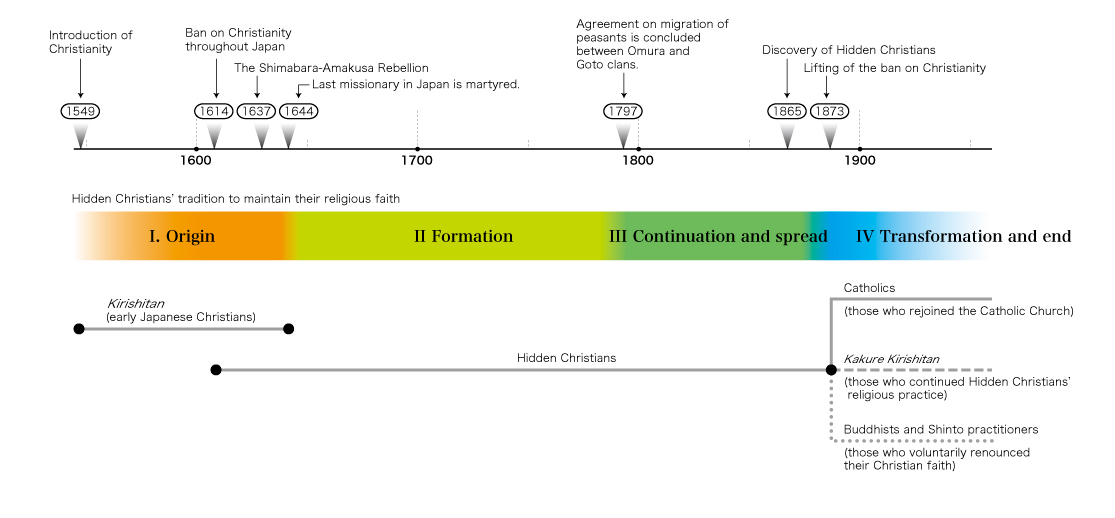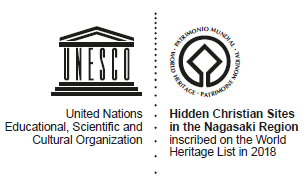 |
Hidden Christians are those who secretly practised the Christian faith, introduced to Japan in the middle of the 16th century, while Christianity was prohibited. |
Introduction to the Hidden Christian
Those who secretly practised the Christian faith while Christianity was prohibited in Japan are referred to as Hidden Christians. Before the prohibition of Christianity, Christians were called Kirishitan, from the Portuguese word ‘cristão’.
The Hidden Christians secretly maintained their religious communities and practised their Christian faith on their own, while outwardly pretending to live as non-Christian peasants or fishers, to harmoniously coexist with the general Japanese society and its traditional religions. Their necessity to continue their social lives while hiding their faith from the rest of society in such ways nurtured their distinctive cultural tradition: relating their religious faith to objects that seemed at first glance unrelated to Christianity and praying to such objects while hiding Christian sacred images and devotional items, and migrating to places where they could easily pretend to be believers in traditional religion or developing untouched land that other people could not easily approach and moving there. It is thought that the cultural tradition of Hidden Christians began gradually changing after the ban on Christianity was lifted in Japan, and came to an end both visually and semantically after Catholic churches began being built in former Hidden Christian villages. The property, ‘Hidden Christian Site in the Nagasaki Region’, attests to the formation, continuation and end of the distinctive cultural tradition of the Hidden Christians.
The people who refused to follow the missionaries and instead continued the distinctive religious system that they had nurtured during the ban came to be referred to as Kakure Kirishitan.









